When securing your job and home ownership, plan for the unexpected by prioritizing emergency savings. Build a fund covering 3-6 months of expenses, distinct from regular savings. Evaluate job stability against industry trends and career growth. Explore mortgage protection options for financial security. Diversify income sources with passive earnings and investments. Craft a contingency plan for homeownership challenges like job loss. Seek professional advice for long-term stability. Embrace a holistic approach to safeguard your financial well-being and peace of mind.
Key Takeaways
- Assess job stability through industry trends and company performance.
- Establish emergency savings to cover mortgage payments during job loss.
- Plan for unexpected expenses by diversifying income sources.
- Maintain open communication with supervisors for career advancement.
- Create a contingency plan for potential homeownership challenges.

Importance of Emergency Savings
Having an emergency savings fund is crucial for financial stability and peace of mind in times of unexpected expenses or income disruption. Building savings through an emergency fund can provide a safety net during unforeseen circumstances such as sudden medical bills, car repairs, or job loss. Your emergency fund should ideally cover three to six months’ worth of living expenses. This amount guarantees that you have a buffer to rely on without needing to dip into your long-term savings or incur debt.
To start building your emergency fund, set a specific savings goal based on your monthly expenses. Track your spending to identify areas where you can cut back and redirect those funds towards your emergency fund. Consider setting up automatic transfers from your checking account to your savings account to ensure consistent contributions. Keep your emergency fund in a separate account from your regular savings to avoid the temptation of using it for non-emergencies.
Having a fully funded emergency fund not only provides financial security but also reduces stress during challenging times. Knowing that you have a financial cushion in place can help you navigate unexpected situations with confidence and peace of mind. Start building your emergency fund today to prepare for whatever the future may hold.
Evaluating Job Security Measures
Evaluating the stability of your current employment situation is vital when determining job security measures. Examining your job stability involves looking at factors such as industry trends, company performance, and your specific role within the organization. Look for signs of growth opportunities and career advancement prospects within your company. Understanding the potential for career progression can provide insight into the long-term viability of your job.
Another important aspect of evaluating job security is to ponder the level of job security inherent in your current position. Some roles may be more susceptible to market fluctuations or automation, while others offer more stability and protection against economic uncertainties. Reflect on the demand for your skills in the job market and how easily transferable they are to different industries.
Moreover, it is advisable to maintain open communication with your supervisors regarding your performance and the future outlook for your position. Constructive feedback and clarity on expectations can help you gauge your standing within the company and make informed decisions about your career path. By staying proactive and attentive to changes in your workplace, you can better position yourself to navigate challenges and secure your job stability for the future.

Understanding Mortgage Protection Options
When it comes to safeguarding your home in times of uncertainty, understanding mortgage protection options is essential. You will learn about the basics of mortgage insurance, the various types of coverage available, and how to select the right plan for your needs. This knowledge will empower you to make informed decisions to protect your home and financial stability.
Mortgage Insurance Basics
Understanding mortgage insurance basics is essential for protecting your investment in your home and securing financial security for your loved ones. When considering mortgage insurance, it’s vital to understand that premium rates and coverage limits vary depending on the type of policy you choose. Premium rates are the amount you pay for the insurance, typically either added to your monthly mortgage payment or paid annually. These rates can fluctuate based on factors such as the amount of coverage you select, your age, health, and the type of mortgage you have. Coverage limits refer to the maximum amount the insurance will pay out in the event of unforeseen circumstances like disability, critical illness, or death. It’s important to review these limits carefully to make sure they align with your financial needs and the outstanding balance on your mortgage. By having a clear understanding of premium rates and coverage limits, you can make informed decisions to protect your home and loved ones effectively.
Types of Coverage
Exploring the various types of coverage options available for mortgage protection can provide valuable insights into safeguarding your home investment and financial well-being. When pondering insurance options for your mortgage, understanding coverage limits, policy exclusions, and the claim process is vital. Below is a breakdown of key aspects to take into account:
| Insurance Options | Coverage Limits |
|---|---|
| Mortgage Life Insurance | Pays off the remaining mortgage balance if the policyholder dies during the coverage period. |
| Mortgage Disability Insurance | Provides coverage for mortgage payments if the policyholder becomes disabled and unable to work. |
| Mortgage Critical Illness Insurance | Offers financial assistance to cover the mortgage if the policyholder is diagnosed with a critical illness specified in the policy. |
| Mortgage Loss of Employment Insurance | Helps cover mortgage payments if the policyholder involuntarily loses their job. |
| Mortgage Payment Protection Insurance | Offers temporary financial assistance with mortgage payments in case of specific life events. |
Understanding the policy exclusions and the claim process for each type of coverage is essential to make a well-informed decision regarding your mortgage protection plan.
Choosing the Right Plan
Consider evaluating your specific needs and financial circumstances to determine the most suitable mortgage protection plan for your situation. When choosing the right plan, it’s important to align it with your budgeting strategies and financial goals. Different plans offer varying levels of coverage and benefits, so understanding your risk management needs is essential in selecting the most appropriate option.
To effectively choose the right plan, assess your current financial situation and future outlook. Evaluate your savings strategies and consider how a mortgage protection plan can fit into your overall financial strategy. Some plans may offer more extensive coverage but come with higher premiums, while others may provide basic protection at a lower cost.

Diversifying Income Sources
To prepare for unexpected financial challenges, consider diversifying your income sources. Having multiple streams of income can provide you with more financial stability and flexibility. Explore side hustle options or investment opportunities to create additional financial safety nets.
Multiple Income Streams
Diversifying your income sources can provide financial stability and security in uncertain times. One effective way to do this is by creating multiple streams of income through various strategies like passive income and investment diversification. By having different sources of income, you can better insulate yourself from financial shocks and job uncertainties.
To illustrate, consider the following table showcasing different types of income streams you could potentially explore:
| Type of Income Stream | Description | Time Commitment | Risk Level |
|---|---|---|---|
| Rental Properties | Earn passive income through rent payments | Medium to High | Medium |
| Stock Market Investments | Generate income through dividends and capital gains | High | High |
| Online Business | Create a source of income through e-commerce or digital services | High | Medium |
Financial Safety Nets
Establishing a financial safety net involves setting up multiple income sources to safeguard against unexpected financial challenges. One important aspect of this strategy is to have rainy day funds or emergency funds set aside for job loss preparation or unexpected expenses. These funds act as a buffer during times of financial uncertainty, providing you with a safety net to fall back on.
To guarantee you are prepared for any unforeseen circumstances, it is advisable to regularly contribute to these funds by setting aside a portion of your income. Having a strong emergency fund can help cover essential expenses like mortgage payments, utility bills, and groceries in case of sudden job loss or unexpected costs.
In addition to traditional savings accounts, you may also explore other options such as investing in low-risk assets or certificates of deposit to diversify your financial safety net. By diversifying your income sources and maintaining adequate rainy day funds, you can better navigate challenging financial situations with greater peace of mind.
Side Hustle Options
Consider exploring various side hustle options as a means to diversify your income sources and enhance your financial stability. In today’s gig economy, freelance opportunities abound across a wide range of industries, offering you the flexibility to earn extra income while pursuing your passions or interests. Popular side hustles include graphic design, content writing, social media management, virtual assistance, and online tutoring. These roles not only provide additional income streams but also allow you to hone valuable skills and expand your professional network.
To succeed in the world of side hustles, prioritize tasks, set clear goals, and establish a dedicated workspace to maximize productivity. Leverage online platforms like Upwork, Fiverr, and TaskRabbit to connect with potential clients and secure freelance projects. Remember to track your earnings, manage your time effectively, and deliver high-quality work consistently to build a positive reputation in the freelance community. By diversifying your income through side hustles, you can create a safety net that complements your primary job and safeguards your financial well-being.

Creating a Homeownership Contingency Plan
To prepare for unexpected homeownership challenges, establish a thorough contingency plan that addresses potential issues and outlines proactive solutions. Begin by implementing robust budgeting strategies to make sure you have a clear overview of your financial situation. Conduct a risk assessment of possible scenarios that could impact your homeownership, such as job loss or unexpected expenses. By understanding the risks, you can better equip yourself for them.
Set savings goals as part of your financial planning. Having a dedicated emergency fund for your home can provide a safety net during tough times. Aim to save a portion of your income regularly to build up this fund. Additionally, consider allocating funds for home maintenance and repairs to prevent any unforeseen issues from escalating.
In your contingency plan, outline steps to reduce expenses during financial hardships. This may include cutting back on non-essential spending, renegotiating bills, or exploring refinancing options. By being proactive and having a well-thought-out plan in place, you can navigate unexpected challenges with more confidence and stability in your homeownership journey. Remember, being prepared is key to weathering any storm that may come your way.
Seeking Professional Financial Advice
Utilizing professional financial advice can provide invaluable insights and strategic guidance in managing your homeownership finances effectively. When it comes to seeking professional financial advice, consider experts in retirement planning, investment strategies, wealth management, and financial planning. These professionals can assist you in creating a thorough financial plan that aligns with your homeownership goals and safeguards your financial future.
Retirement planning is an important aspect of homeownership finances. A financial advisor specializing in retirement planning can help you determine how much you need to save for retirement, recommend retirement accounts to maximize your savings, and create a withdrawal strategy to sustain your lifestyle after retirement.
Investment strategies play a crucial role in building wealth and securing your homeownership. A financial advisor with expertise in investment strategies can help you develop a diversified investment portfolio tailored to your risk tolerance and financial objectives.
Wealth management professionals can assist you in growing your assets, protecting your wealth, and passing it on to future generations. By seeking advice from a wealth manager, you can optimize your financial resources and ensure long-term financial security for yourself and your family.
Incorporating professional financial advice into your homeownership planning can greatly enhance your financial well-being and help you navigate unforeseen circumstances with confidence.

Frequently Asked Questions
Can I Use My Emergency Savings for Non-Financial Emergencies?
Yes, you can use your emergency savings for non-financial emergencies. However, it’s important to maintain a balance between financial priorities and unexpected expenses. Develop a solid savings strategy to make sure you have funds for all scenarios.
How Do I Assess Job Security in a Changing Economy?
Evaluating job security amid economic changes involves analyzing key indicators and the job market. Research career growth prospects and industry trends. Stay informed to make strategic decisions, enhancing your professional resilience in a dynamic environment.
Are Mortgage Protection Options Necessary for All Homeowners?
Insurance coverage for mortgage protection can provide financial stability. Assess your budgeting strategies and risk factors to determine if it’s necessary. When owning a home, it’s wise to explore various options to safeguard your investment.
What Are Examples of Diversified Income Sources?
To diversify your income sources, explore passive income streams like investments or rental properties. Consider side hustles such as freelance work or online businesses. By creating multiple revenue streams, you can enhance financial stability and mitigate risks.
When Is the Right Time to Seek Financial Advice for Homeownership?
When seeking financial advice for homeownership, consider your long-term goals. Financial planning for retirement is essential in wealth management. Look into investment strategies to secure your future. The right time is now.
Conclusion
Now that you have a plan in place to protect your job security and homeownership, you can rest assured that you are prepared for any unexpected challenges that may come your way. By taking the necessary steps to build emergency savings, evaluate job security measures, and understand mortgage protection options, you have set yourself up for success. Remember, being proactive and seeking professional financial advice will only further secure your future and provide peace of mind.



